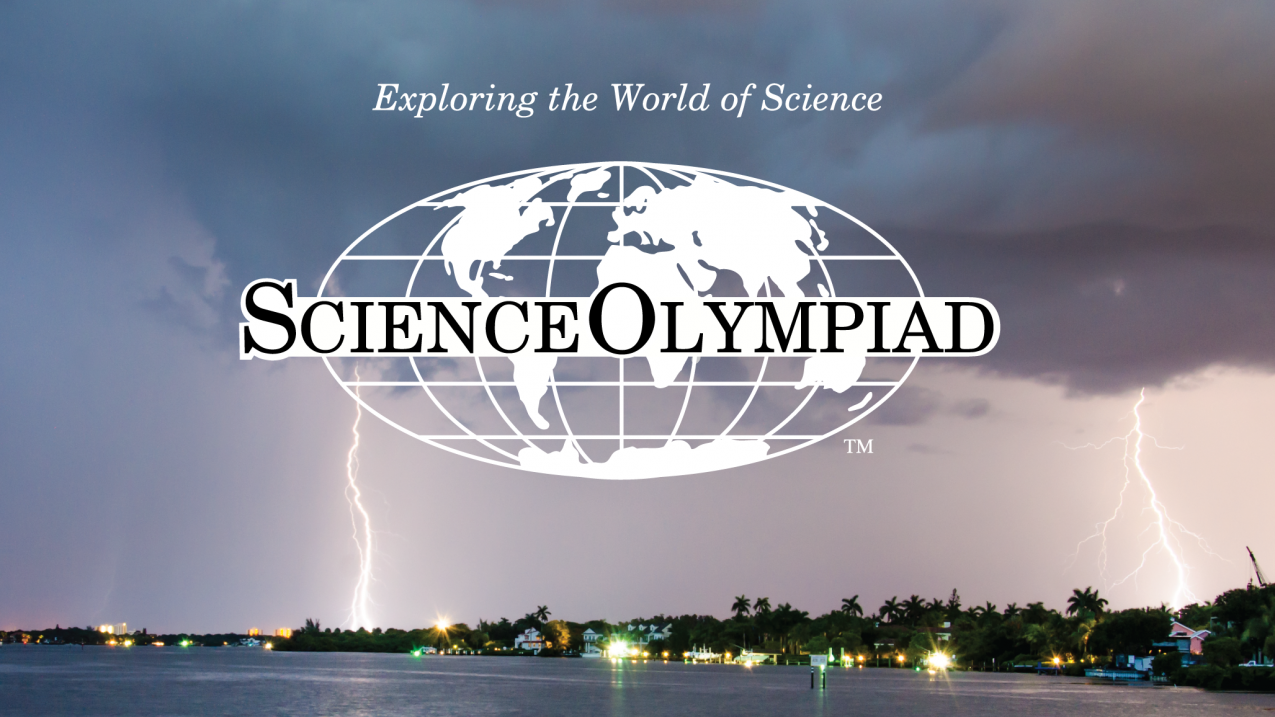Resources for the 2024 Science Olympiad challenge in Dynamic Planet: Earthquakes, volcanoes, and tectonics
Science Olympiad is a national STEM competition dedicated to improving the quality of K-12 science education, increasing interest and engagement in science, and providing recognition for outstanding achievement by students and teachers. Science Olympiad tournaments emphasize teamwork, problem solving, and hands-on learning practices. For more information about Science Olympiad, visit www.soinc.org offsite link. Here, we share resources from NOAA and our federal partners.

Science Olympiad logo (Image credit: Science Olympiad; Background image courtesy of Sam Farkas. )
Background information
JetStream: An online school for weather
JetStream has comprehensive information on a variety of meteorology and atmospheric science topics, including severe weather phenomena, winds, precipitation, atmospheric circulation, upper air charts, global weather, synoptic weather, and smaller scale phenomena like thunderstorms, Doppler radar, satellites, and more. There is a section on tsunamis which includes causes, propagation, dangers, locations, detection, and more.
What are tsunamis?
This resource collection about tsunamis helps integrate NOAA science into formal and informal education. Learn about tsunami movement, safety, and forecasting.
Tsunami safety
Tsunamis are among Earth's most infrequent hazards. But even though tsunamis do not occur very often, and most are small and nondestructive, they pose a major threat to coastal communities, particularly in the Pacific. Learn about tsunamis and what you can do to keep yourself and your loved ones safe in the event of a tsunami.
The science behind tsunamis
Download this poster to learn more about the structure of tsunamis.
Vents and volcanoes
Explore fact sheets, essays, and stories from our explorers to learn more about the study of submarine volcanoes and hydrothermal vents.
The Mariana Volcanic Arc
The Mariana Volcanic Arc extends from 13°N to 23°N in the western Pacific Ocean, north of Guam. The Mariana region contains nine volcanic islands and more than 60 submarine volcanoes, of which at least 20 are hydrothermally active.
Tsunami frequently asked questions
Read through frequently asked questions about tsunamis.
Data resources
U.S. Tsunami Warning System
Keep track of tsunami warnings, advisories, watches, and threats in real-time.
Tsunami events (1850 to Present)
Explore this animated, interactive map displaying global historical tsunami events from the Global Historical Tsunami Database at NOAA's National Centers for Environmental Information.
Tsunami data and information
The National Centers for Environmental Information (NCEI) and the co-located World Data Service for Geophysics compile a unique set of tsunami-related products as part of a continuing program to support the interests of tsunami warning centers, engineers, oceanographers, seismologists, and the public. Print and make this 3-D icosahedron globe that shows the locations of historical tsunami sources.
Volcanic data and information
Review significant volcanic eruptions, volcano locations, images, and more. This Science on a Sphere dataset video shows the locations of current and past activity for all volcanoes on the planet active during the last 10,000 years.
National Data Buoy Center
The National Data Buoy Center provides real-time environmental observations collected from buoys around the world, including inland sources. View both recent and historical information on ocean and weather conditions, as well as any current tsunami activity. Graphs and tables of data are available for water column height at each buoy location.
Significant Volcanic Eruption Database
The Significant Volcanic Eruption Database is a global list of over 800 significant eruptions. It includes information about the latitude, longitude, elevation, and type of volcano for each eruption.
1-Minute water level data
The primary application for high resolution, 1-minute water level data is to support national tsunami warning and mitigation efforts. You can also view and track the tsunami capable tide stations.
NOAA View Global Data Explorer
Access NOAA data from a variety of satellite, model, and other observations in a single, user-friendly map. Investigate various datasets related to the ocean, atmosphere, land, cryosphere, and climate and view them as animations over weeks, months, or years. Mouse over the maps to inspect individual data values at any point.
Ocean facts
What is the mid-ocean ridge?
The mid-ocean ridge is the most extensive chain of mountains on Earth, stretching nearly 65,000 kilometers (40,390 miles) and with more than 90 percent of the mountain range lying underwater, in the deep ocean.
Do volcanic eruptions happen underwater?
Underwater volcanic activity is a constant process that shapes the features of the ocean.
What is a hotspot volcano?
In geology, a hotspot is an area of the Earth’s mantle from which hot plumes rise upward, forming volcanoes on the overlying crust.
What is a tsunami?
A tsunami is a series of waves caused by earthquakes or undersea volcanic eruptions.
What features form at plate tectonic boundaries?
Deep ocean trenches, volcanoes, island arcs, submarine mountain ranges, and fault lines are examples of features that can form along plate tectonic boundaries.

